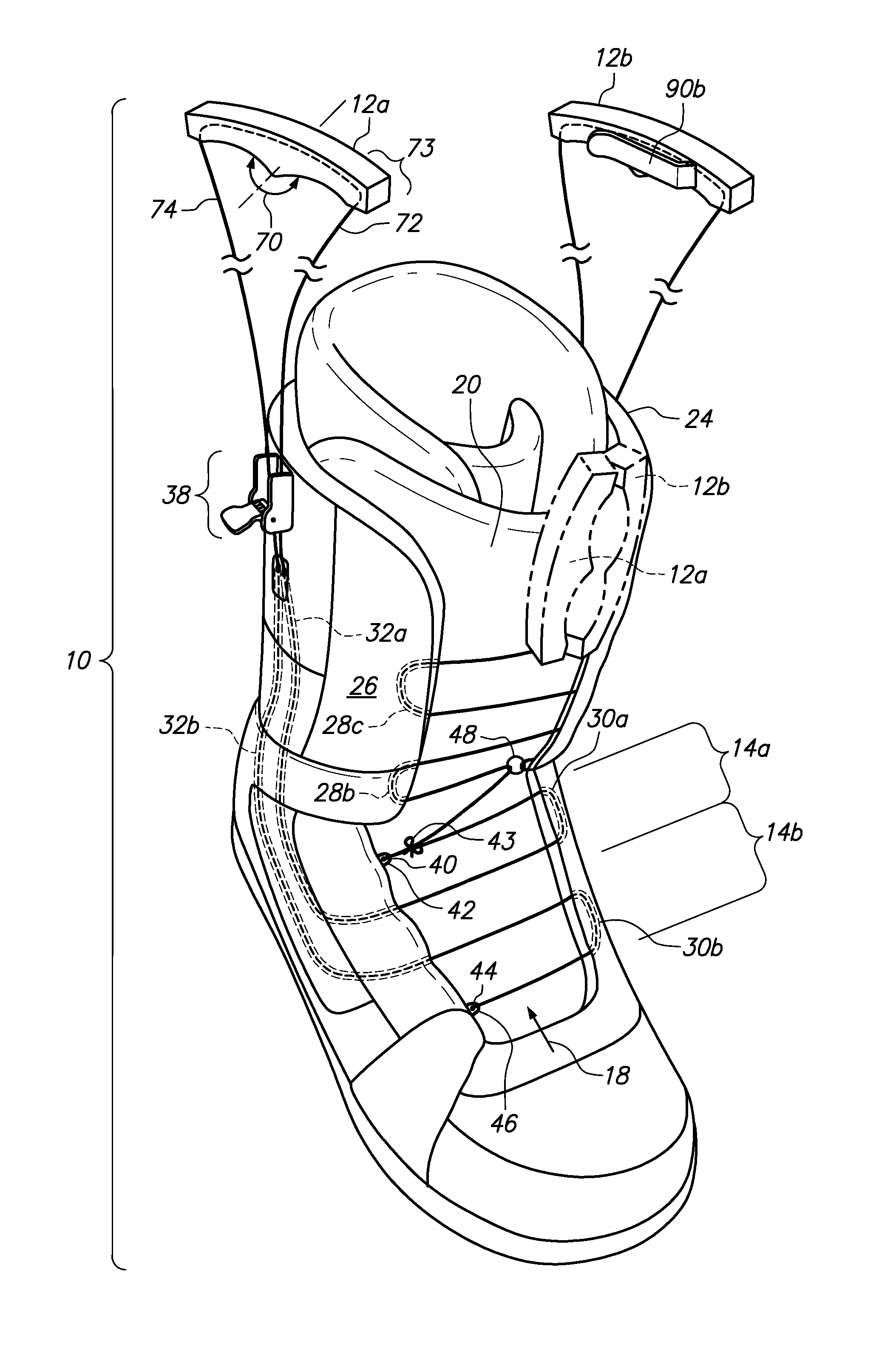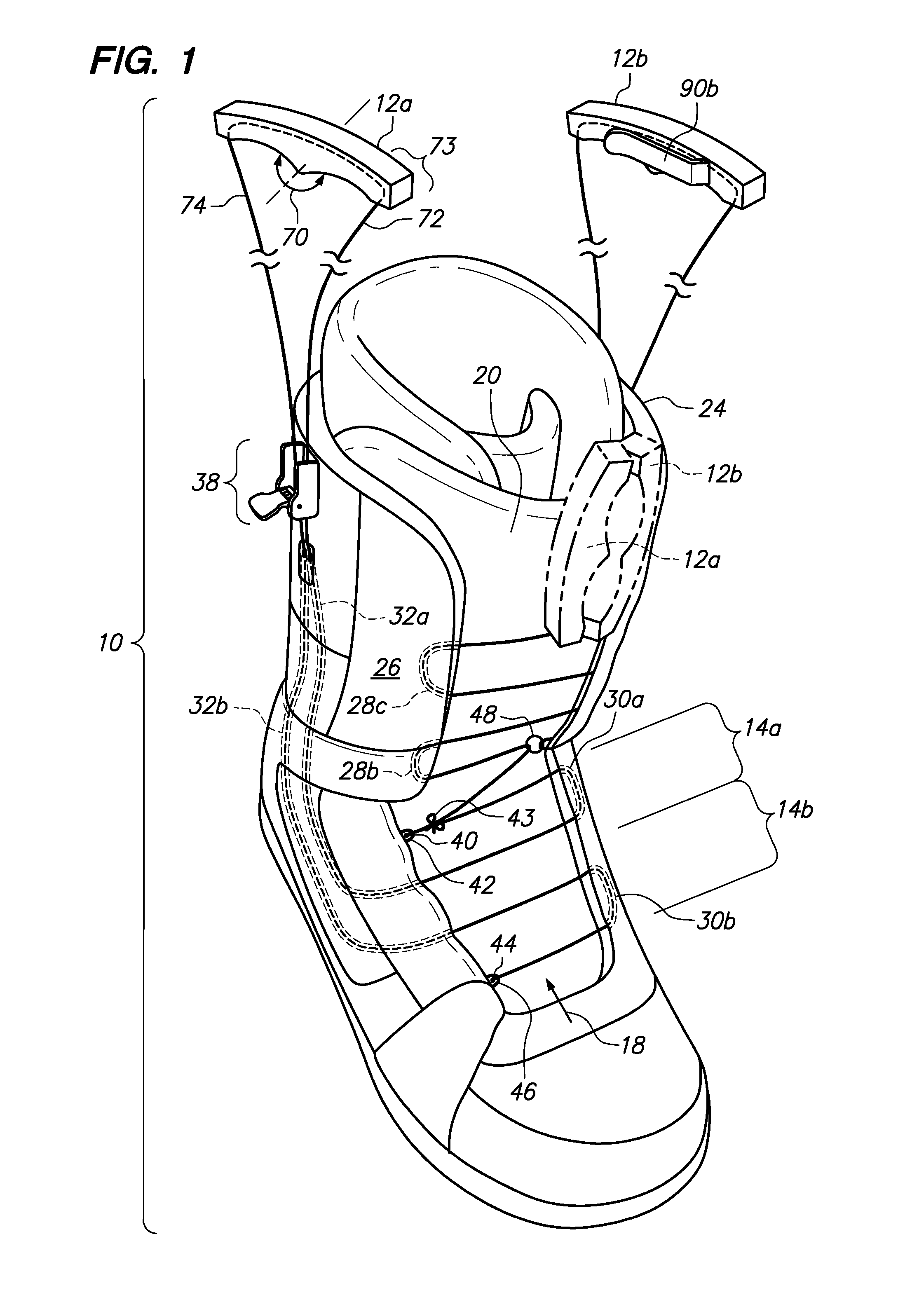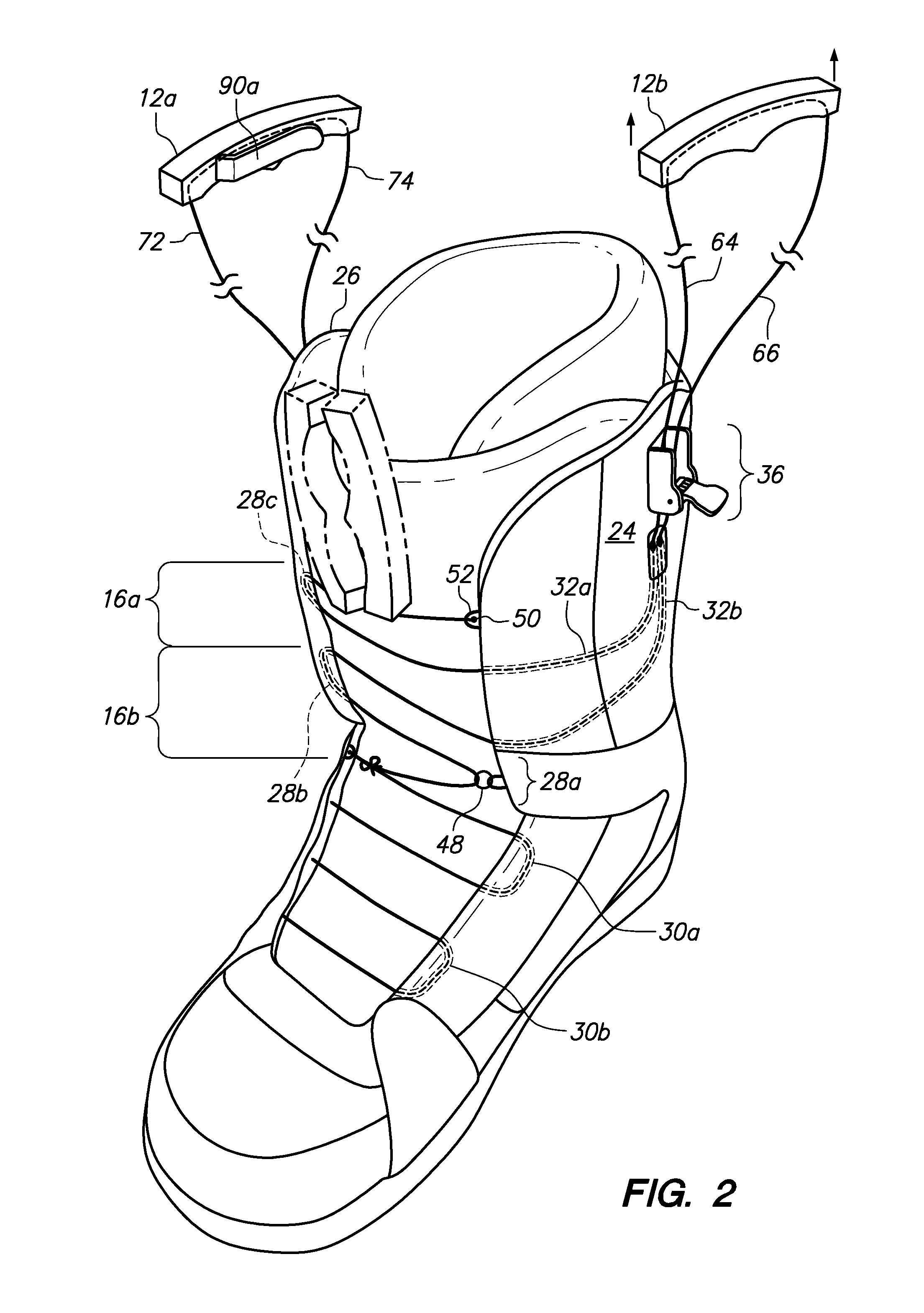Footwear Lacing System
a lacing system and boot technology, applied in the field of snowboard boots, can solve the problems of reducing the ability of the person to apply toe or heal pressure to initiate the turn, affecting the responsiveness of maneuvering, and affecting the responsiveness of the person to apply toe or heal pressur
- Summary
- Abstract
- Description
- Claims
- Application Information
AI Technical Summary
Benefits of technology
Problems solved by technology
Method used
Image
Examples
Embodiment Construction
Referring now to the figures, a snowboard boot 10 is shown. The snowboard boot 10 may have two handles 12a, b for tightening the boot 10 about a foot portion of a person. Each handle 12a, b controls tension within two zones 14a, b (see FIG. 1) or 16a, b (see FIG. 2). As such, the tension of the lace 18 can be adjusted in four zones 14a, b, 16a, b. The four different zones of tension adjustment 14a, b, 16a, b provide greater comfort to the user since the user can adjust the tension in different zones based on the unique foot configuration of the user. The user may tighten the upper shin to a different tension compared to the lower shin. Also, the person or user may tension the upper foot portion to a different tension compared to the lower foot portion. Based on the user's unique foot configuration, the tension of the boot 10 and various zones 14a, b, 16a, b may be adjusted.
The figures also illustrate that the handles 12a, b may be stored on the front tongue 20 (see FIGS. 1-5) or on ...
PUM
 Login to View More
Login to View More Abstract
Description
Claims
Application Information
 Login to View More
Login to View More - R&D
- Intellectual Property
- Life Sciences
- Materials
- Tech Scout
- Unparalleled Data Quality
- Higher Quality Content
- 60% Fewer Hallucinations
Browse by: Latest US Patents, China's latest patents, Technical Efficacy Thesaurus, Application Domain, Technology Topic, Popular Technical Reports.
© 2025 PatSnap. All rights reserved.Legal|Privacy policy|Modern Slavery Act Transparency Statement|Sitemap|About US| Contact US: help@patsnap.com



